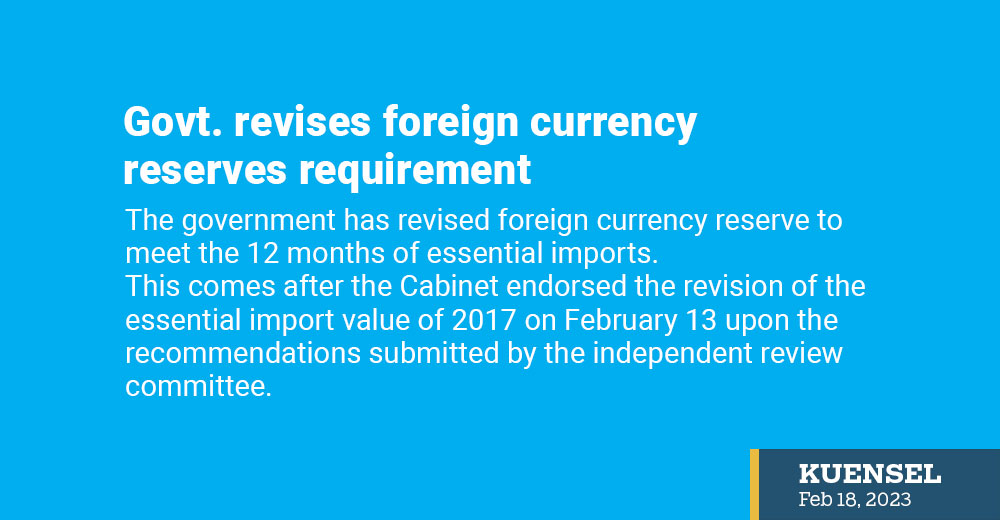…directs finance ministry to review the proposed moratorium
Thukten Zangpo
The government has revised foreign currency reserve to meet the 12 months of essential imports.
This comes after the Cabinet endorsed the revision of the essential import value of 2017 on February 13 upon the recommendations submitted by the independent review committee.
The revised essential import value of 2023 for the normal period is USD 603 million (M) and USD 464M under the critical period, according to the Cabinet.
The Constitution mandates the State to maintain foreign currency reserves to cover at least 12 months of essential imports.
Based on the revised essential import value, the Cabinet directed the finance ministry on February 15 to review and analyse the impact of imposing a moratorium on non-essential items and whether to restrict the issuance of foreign currency for non-essential items.
The Cabinet also directed the ministry to review the impact of the current vehicle moratorium and submit the ministry’s recommendations.
To save the dwindling reserves, the government banned the import of all vehicles, except utility vehicles, heavy earth-moving machines, and agriculture machinery from August 19 last year.
Based on the essential import value in 2017 at USD 668M, the finance ministry proposed to the Cabinet to continue with the moratorium on vehicle import and is looking into the possibility to implement a phase-II moratorium.
The moratorium’s phase II proposed to suspend construction loans and put a ban on the import of furniture, processed meat and food items, junk foods, alcohol, and LED television.
While the latest figures for foreign currency reserves were not accessible, it was learned that the foreign currency reserves were just a little above USD 668M.
If the projected foreign currency reserves are expected to hit the Constitutional requirement, the Royal Monetary Authority (RMA) has to alert the government of the reserve position, three months in advance.
According to the RMA’s provisional figures, the foreign currency reserve position was at USD 797.6M in October last year, adequate to meet 14.33 months of the country’s essential imports.
The reserve saw a decline of over 37 percent from USD 1.27 billion (B) in the same month last year.
Since Bhutan is an import-dependent country, the surging import bills erode the country’s foreign currency reserves.
Figures from the ministry show that the country’s import bill rose to Nu 93.03B as of September last year, surpassing the one-year’s import of Nu 90.23B in 2021.
This widened the country’s trade deficit to Nu 48.14B in September last year—an increase of Nu 15.9B from 2021.
Figures show that the financial institutions lent Nu 191.96B as of September last year, an increase of Nu 16.2B from the same month the previous year.
Housing loans, which translated to over 80 percent of imports, contributed 27 percent of the total loan recorded at Nu 51.83B. At the same time, the trade and commerce and transport loans were recorded at Nu 16.39B and Nu 9.98B respectively.
Education loans accounted for Nu 10.25B.


